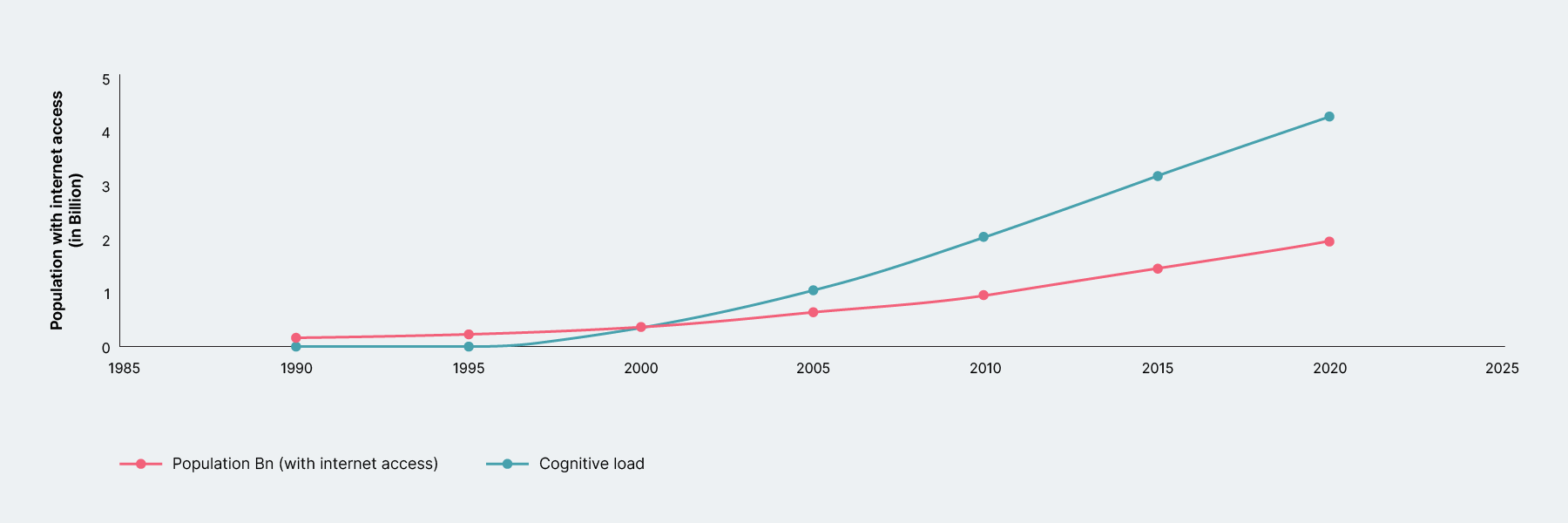We plan to look at the evolution of SuperApps in a digital ecosystem. We will consider the impact of this phenomenon through three success stories and analyze the common patterns in the emergence of a successful SuperApp.
Let’s begin with a better understanding of the digital ecosystem. It serves as a community of organizations and customers and straddles a digital and physical environment. The ecosystem can also be defined as the chain of interaction between different parties of the community over a connected network.
Digital ecosystems enable today’s customers and businesses with value, convenience, efficiency, growth and sustenance.
Digital ecosystems help:
Empower businesses with a platform economy
Unlock the power of network coordination
Provide automated and trusted processes
Build for a shared economy and reusability
Manage the smooth flow of data across an ecosystem
Evolution of digital ecosystems
The diagram shared below is a visual representation of the emergence of digital ecosystems powered by the rapid and global penetration of the internet. In the 1990s, the rise in digital delivery of products and services (like Amazon and Paypal) benefited consumers like never before.



Pre internet era
Early stages
Internet developed for defence purposes

Ebay, Paypal, Amazon
Internet introduced
1991 - first web page
Digital bookstore - Amazon
Digital payments - Paypal

Baidu, Facebook
Information highway
Shift from transactional to experiential
Utilities at fingertips

Youtube, Googlemaps
Network effect
Always connected
Digital@core
Digital proliferation leading to cognitive overload

Instagram, WeChat, Grab, Gojek
Consolidation and convergence
Simplification
One stop digital shop
The early 2000s saw the evolution of social networking sites like Facebook, which fulfilled social connectivity needs of users across the globe and lowered geographical barriers. The sharp decline in data storage and transfer costs further powered the creator economies with apps like YouTube.
Consolidation within digital ecosystems
The above described evolution helped modern consumers become natives of a digital world. Every consumer’s favorite companion, ‘the mobile phone’ is used to perform all tasks – from ordering groceries to making a payment to planning a vacation and more.
While this is convenient, consumers still have to share the same information, remember multiple passwords and fill in new forms with every new app or service. This leads to a myriad of apps needed for multiple tasks and too much storage space required from the phones.
New age businesses see this situation as an opportunity to make navigating through the digital world easier. A new set of mobile applications called SuperApps have been trying to consolidate services delivered through multiple channels and applications. Super apps essentially provide a single portal to a multitude of products and services that customers can access from their mobile devices.
The allure of SuperApps for customers and businesses
SuperApps have a wider customer share wallet as customers end up spending at one place; a win-win situation for customers and businesses. Although the availability of varied services can lead to higher operational expenses, the cost of customer acquisition reduces drastically.
Additionally, rich user lifestyle data helps generate deeper insights enabling SuperApps to provide an informed and personalized, more engaging experience for customers. This ensures unmatched customer loyalty, leading to a gradual increase in customers on a platform, further leading to the flywheel effect that encourages more businesses to come onboard. Thus SuperApps are able to widen the value delivered through the choices offered on their platform which bring in even more customers.
The SuperApp phenomenon: three success stories
GOJEK (now GoTo): how a SuperApp was built for an unmet customer need and evolved into an ecosystem platform
Gojek started its journey by building a core use case that solved a market need and helped users with their daily commute. It connected riders and drivers using a mobile application.
As Gojek progressed in its journey, the SuperApp leveraged its strength – Gojek’s driver network that emerged from its core use case – to diversify into other core services. To support these core services, Gojek offered complimentary services (Go-Pay and Go-Points, a loyalty program from Gojek) that not only motivated users to use Gojek over other options but also led to its ecosystem strategy.
Ever since, Gojek’s growth strategy has involved different levers like its market expansion, SuperApp, loyalty and M&A strategy. Gojek was able to build a solid foundation on data, experimentation and customer experience which has allowed it to scale rapidly. Gojek has eventually emerged; a pioneer in the SuperApp space.
WeChat: how a SuperApp built an ecosystem around users by embedding itself into a society’s culture
WeChat began as a Chinese chat service over the internet, but expanded to other use cases with a three-pronged approach:
- A platform that embedded itself into a user’s everyday life and served as many use cases as possible (like Gojek). This elevates user experience by allowing them to carry out (all) tasks on one platform via complementary services – hailing rides, booking movie tickets (WePiao), making hospital payments, using social media and being an operating system for internet connected devices.
- A link between users and their digital action. It creates a digital ID for users allowing them to share digital information or perform digital actions on the platform. For example, sharing contact information, receiving payments and more.
- An integral part of society. An example of this is how the Chinese give each other red packets (with money) during occasions and, WeChat allows users to send each other red packets which further embeds itself into the Chinese culture.
The three-pronged approach led to WeChat being a part of almost every digital customer journey.
Tata Neu: how a SuperApp leveraged brand value and customer loyalty to consolidate across the physical and digital world
Tata Group, a $100 billion Indian conglomerate has a legacy of consumer products across services. Tata Group also has a dedicated customer base across India that consumes its services through physical and digital channels.
Tata Digital decided to leverage customer loyalty and offer all its products and services under one Tata experience - brought together by the Tata Neu SuperApp. Tata Neu pivoted from their transaction-based model to a multi-channel interaction model, so customers could earn Neu Coins (loyalty points) and redeem them seamlessly across touchpoints.
This unified loyalty program included SuperApp's NeuPass, which engaged and retained loyal customers by providing them with exclusive offers. The approach generates a single view of customers and rewards them by offering personalized services, leading to higher customer retention and deeper engagement. The SuperApp also made it possible for consumers to access cutting-edge digital content (Stories), make payments (Tata Pay), manage finances and plan their next holiday or meal.
The five foundational elements of a successful SuperApp
Although each of the described three SuperApps have taken different paths in their journey, here are the common patterns that are foundational to each of their successes:

Strong use case - address a core user need

Platform strategy - ease of onboarding integration and payments

Rich porfolio - products and services

Experience design and service delivery - seamless across offerings

Higher value to customers - customer loyalty
SuperApps give organizations the opportunity to simplify the digital life of their customers. The organization could be a startup solving a specific customer problem or a legacy organization with multiple products and services offerings in the market. There is a significant socio-economic impact that SuperApps can have on the digital ecosystem and their partners. SuperApp’s success is based on trust in the intersection between the digital and physical realm, and successfully scaling growth in a connected world.
Disclaimer: The statements and opinions expressed in this article are those of the author(s) and do not necessarily reflect the positions of Thoughtworks.


















